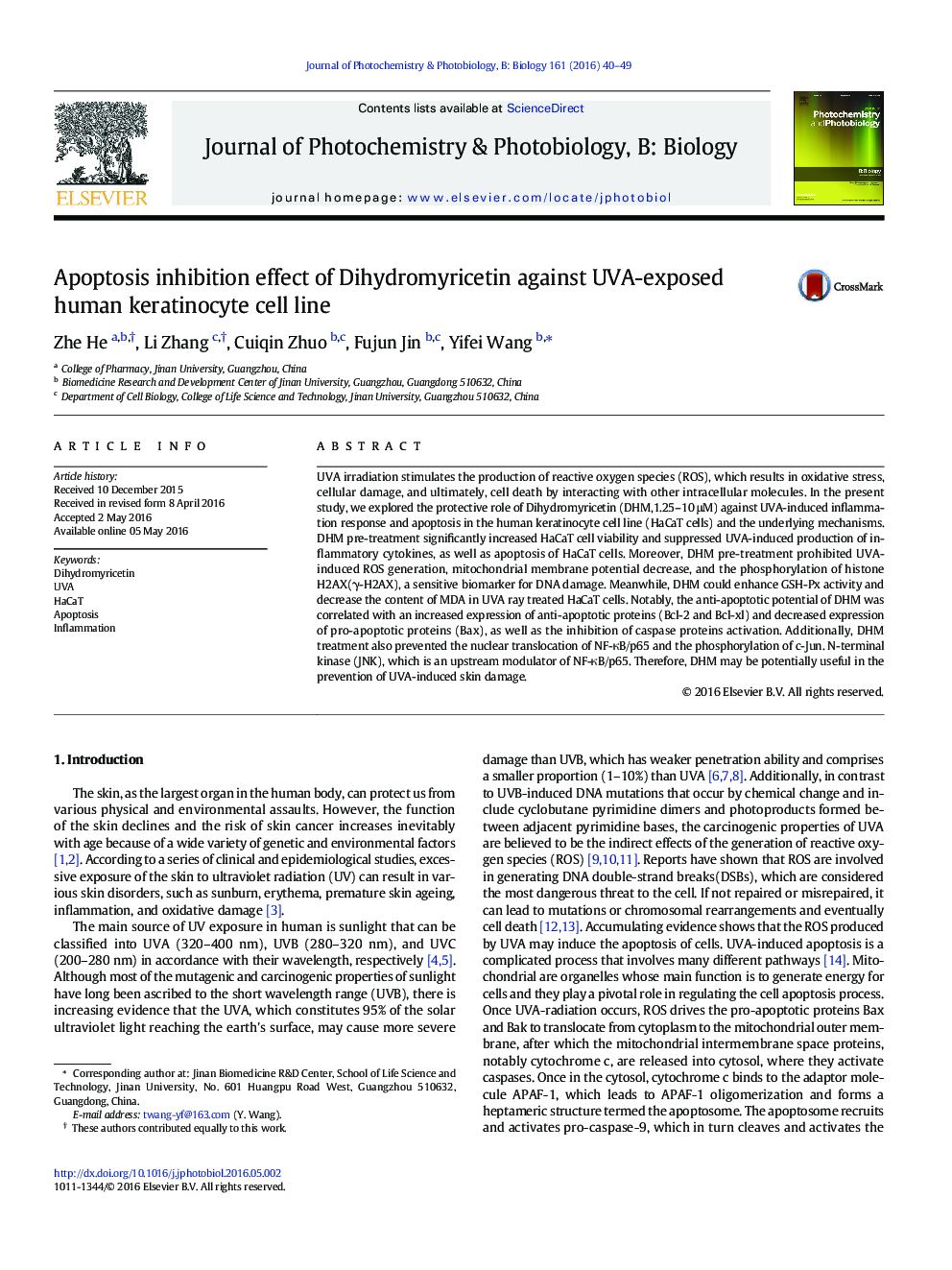| Article ID | Journal | Published Year | Pages | File Type |
|---|---|---|---|---|
| 6493641 | Journal of Photochemistry and Photobiology B: Biology | 2016 | 10 Pages |
Abstract
UVA irradiation stimulates the production of reactive oxygen species (ROS), which results in oxidative stress, cellular damage, and ultimately, cell death by interacting with other intracellular molecules. In the present study, we explored the protective role of Dihydromyricetin (DHM,1.25-10 μM) against UVA-induced inflammation response and apoptosis in the human keratinocyte cell line (HaCaT cells) and the underlying mechanisms. DHM pre-treatment significantly increased HaCaT cell viability and suppressed UVA-induced production of inflammatory cytokines, as well as apoptosis of HaCaT cells. Moreover, DHM pre-treatment prohibited UVA-induced ROS generation, mitochondrial membrane potential decrease, and the phosphorylation of histone H2AX(γ-H2AX), a sensitive biomarker for DNA damage. Meanwhile, DHM could enhance GSH-Px activity and decrease the content of MDA in UVA ray treated HaCaT cells. Notably, the anti-apoptotic potential of DHM was correlated with an increased expression of anti-apoptotic proteins (Bcl-2 and Bcl-xl) and decreased expression of pro-apoptotic proteins (Bax), as well as the inhibition of caspase proteins activation. Additionally, DHM treatment also prevented the nuclear translocation of NF-κB/p65 and the phosphorylation of c-Jun. N-terminal kinase (JNK), which is an upstream modulator of NF-κB/p65. Therefore, DHM may be potentially useful in the prevention of UVA-induced skin damage.
Related Topics
Physical Sciences and Engineering
Chemical Engineering
Bioengineering
Authors
Zhe He, Li Zhang, Cuiqin Zhuo, Fujun Jin, Yifei Wang,
